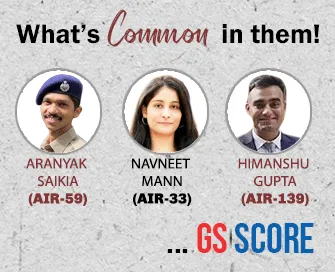

12th September 2023 (9 Topics)
Editorials
Context
The brief discusses India's G20 presidency, emphasizing the challenges and opportunities it presented, and highlights key outcomes and challenges in international cooperation and global governance.
G20 Presidency: A Challenge and Opportunity
- Global Context: India's G20 presidency occurred during a turbulent time in the international arena, marked by shifting global dynamics, heightened geopolitical tensions, and economic challenges.
- Diplomatic Success: India's diplomacy managed to overcome hurdles related to the Ukraine war, and the summit, heavily focused on developing world issues, proceeded without any country blocking the agenda.
- Global Relevance: Despite the absence of China's Xi Jinping, India's growing influence and relationships helped shape the summit's outcomes.
Outcomes and Challenges of the G20 Summit
- New Delhi Declaration: The New Delhi Declaration, comprising 83 paragraphs, covers a wide range of topics, including sustainable growth, the 2030 sustainable development agenda, international trade, climate change, and finance.
- Implementation Challenges: The declaration's effectiveness depends on the implementation of commitments, which often faces difficulties due to differing opinions among G20 countries and a gap between promises and actions.
- Examples of Challenges: There persists challenges in achieving targets related to sustainable development, climate finance, and debt relief for developing countries. This challenge highlights the need for greater global governance reforms.
Positive Aspects of India's G20 Presidency
- Organizational Efforts: India's presidency involved significant organizational efforts, including numerous meetings in various cities and engagement with diverse sections of society.
- Global South Focus: India elevated issues concerning the Global South through the Voice of Global South summit and inclusion of the African Union in G20 discussions.
- Economic Corridor and Technology Focus: India unveiled a separate economic corridor and emphasized technological transformation and Digital Public Infrastructure (DPI) during the summit, showcasing its achievements.


Editorials
Context
India's G20 presidency came at a critical juncture when global geopolitics and economics were undergoing transformation. This period was characterized by the Russia-Ukraine war and the lingering impacts of the COVID-19 pandemic.
Diplomatic Timing and Global Dynamics
- Geo-Political Churn: India's G20 presidency occurred during a time of significant geopolitical shifts, primarily influenced by the Russia-Ukraine conflict and its consequences, as well as the ongoing recovery from the COVID-19 pandemic.
- Voice of Global South Summit: India leveraged its presidency to convene the Voice of Global South summit, bringing together around 120 countries disproportionately affected by the war, reflecting their concerns on the G20 platform.
- African Union's Inclusion: India's proposal to include the African Union (AU) as the 21st member of the G20, with support from key global players like the US, France, and China, aimed to enhance the representation of the Global South in the group.
Strategic Diplomacy and Outcome
- Mutually Reinforcing Moves: The Voice of Global South summit and the AU's inclusion complemented each other and allowed India to craft a diplomatic approach addressing the Russia-Ukraine conflict in the New Delhi G20 Leaders' Declaration.
- Global South's Key Role: The concerns of the Global South, represented by the AU and other nations, became pivotal in bridging differences between the G7-led western group and the Russia-China bloc, leading to a consensus in the joint communique.
- Comprehensive Outcome: The joint communique not only addressed the economic impact but also delved into the political implications of a powerful nation invading a smaller neighbor, emphasizing the diplomatic success achieved during India's presidency.
Diplomatic Success and Global Impact
- Long-term Significance: India's diplomatic initiatives during its G20 presidency, including the AU's inclusion and the Voice of Global South summit, have the potential to shape future global discussions and enhance the representation of emerging powers in international forums.
- Enhanced Representation: The AU's inclusion and the Global South's role in the G20 summit highlighted the importance of representation and gave a voice to countries disproportionately affected by global events.
- Diplomatic Nuance: India's diplomatic approach, strategically timed and articulated, not only reflected the concerns of the Global South but also played a key role in balancing the interests of major geopolitical players in shaping the joint communique on the Russia-Ukraine conflict.


Editorials
Context
In recent times, India has witnessed the emergence of a distinct brand of nationalism that centers on the concept of home and belonging.
Contemporary Nationalism and Notions of Home
- Exclusivist Nationalism: Over the last decade, a distinctive form of nationalism has gained prominence in India, which shapes public discourse by categorizing individuals as either "genuinely" Indian or as "outsiders" and "anti-nationals."
- Defining Home: This nationalist ideology revolves around rigid definitions of home and national identity, emphasizing a sense of belonging while excluding those deemed as "outsiders."
- Shift from Anti-colonial Nationalism: Unlike the anti-colonial nationalism that embraced a more inclusive perspective, this contemporary nationalism emphasizes a narrow and exclusionary view of home and nation.
The Importance of Not Being Completely at Home
- Transnational Thought in Anti-colonial Nationalism: Figures like BR Ambedkar, Mahadevi Verma, Captain Lakshmi Sahgal, and Jawaharlal Nehru within anti-colonial nationalism incorporated transnational thought, emphasizing that Indian identity should draw from both local and global influences.
- Questioning Parochialism: These thinkers highlighted the importance of never feeling completely at home to avoid parochial nationalism and bigotry, as strict demarcations between insiders and outsiders can lead to intolerance.
- A Different Vision of Dwelling: An alternative perspective on home and belonging is rooted in Indian history, where thinkers like Rahul Sankrityayan and Harivansh Rai Bachchan proposed the philosophy of "not-being-at-home" as a way of engaging with the world.
The Philosophy of "Not-Being-at-Home"
- Ghummakkad-dharma by Rahul Sankrityayan: Sankrityayan advocated for a philosophy of "ghummakkad-dharma," which encourages individuals to explore the world beyond their immediate roots and provide assistance to strangers, regardless of language or origin.
- Dwelling in the World: Sankrityayan's philosophy of not-being-at-home fosters a sense of dwelling in the world and challenges exclusive ideas of home and belonging.
- Harivansh Rai Bachchan's Perspective: Bachchan's musings on attachment to an ancestral hukkah that changed over time reflect the dynamic nature of identity and the capacity to envision home and ancestry in multiple ways.


Editorials
Context
Despite being the fastest growing large economy, India is facing the alarming issue of food-price inflation. Its impact can be seen on the affordability of a healthy diet for a significant portion of the population.
The Gravity of the Problem
- Rising Food-Price Inflation: Food prices in India have been steadily increasing since 2019, with annual inflation exceeding 11% in July 2023, the highest in a decade.
- Shocking Affordability Figures: The Food and Agriculture Organization (FAO) estimates that in 2021, a staggering 74% of the Indian population cannot afford a healthy diet, equivalent to approximately one billion people.
- Evidence of Impact: Studies reveal a significant decline in purchasing power, with food costs outpacing wage growth, leading to concerns about reduced food consumption and increasing instances of nutrient deficiency, particularly among women.
The Need for Intervention
- Ineffectiveness of Macroeconomic Policy: Conventional macroeconomic policies have failed to control food inflation, and the Reserve Bank of India's "inflation targeting" approach does not address supply-side issues.
- The Green Revolution's Success: India's historical success with the Green Revolution, which involved high-yield seeds, cheap credit, and assured prices for farmers, is highlighted.
- Mistakes of the Past: While celebrating the Green Revolution, there is need to acknowledge the past mistakes such as over-reliance on chemical fertilizers and focusing on cereals over pulses, leading to soil degradation and inflation.
Recommendations for a Second Agricultural Revolution
- A Comprehensive Approach: To tackle rising food prices, a multifaceted approach is needed, including measures to increase agricultural productivity and lower production costs.
- Key Initiatives: Specific initiatives are proposed, such as increased public spending on irrigation, promoting land leasing, revitalizing agricultural research institutes, and re-establishing agricultural extension services.
- State and Central Collaboration: Effective collaboration between states and the central government, resembling the cooperative federalism model, is essential to implement these initiatives successfully.



